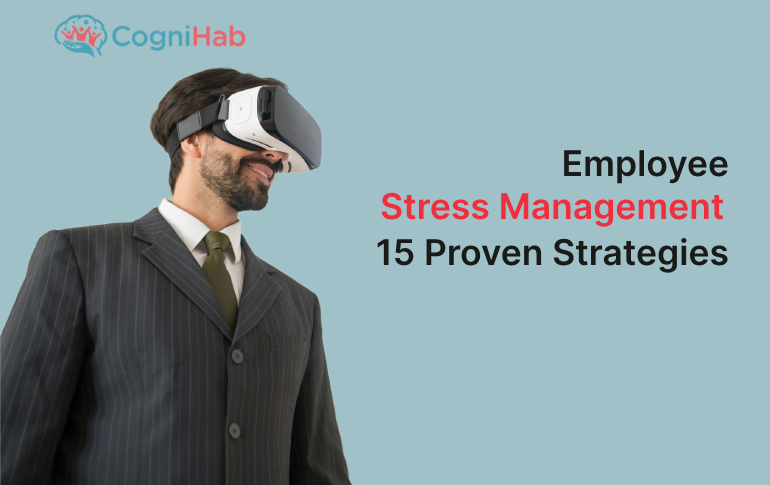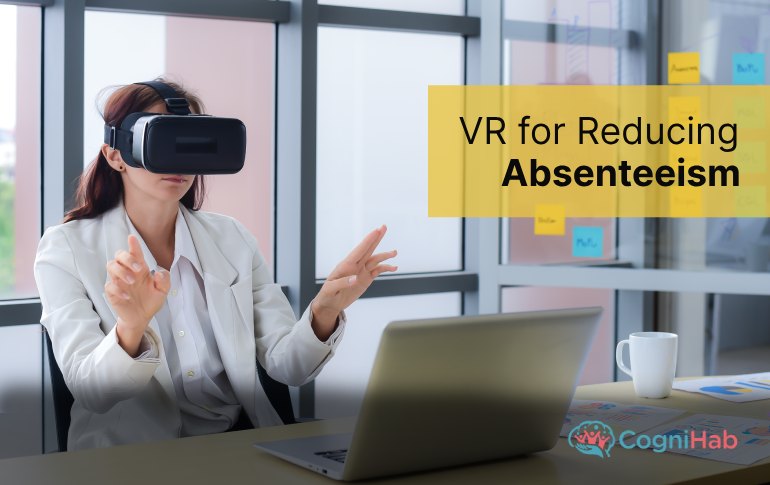15 Proven Stress Management Strategies to Build a Stress-Free Workforce
A normal stress level at work is normal and sometimes useful. Chronic stress leads to employee burnout and affects their lives and business outcomes. Building a happy and healthy workplace requires effective management of employee stress. Stress management in the workplace is an issue businesses must focus on because it impacts business outcomes directly.
This guide provides 15 proven strategies for employee stress management. The following strategies will help create a balanced and thriving work environment.
What makes a job stressful?
Workplace stress is very common these days in every workplace, causing organizations to feel the impact it has on employee mental well-being, job satisfaction, and even work productivity. And understanding what their stressors are marks the step toward a healthier workplace. They often involve both the work environment and personal circumstances. Here are some common contributors to job stress:
Causes of Workplace Stress
Workplace stress can stem from various sources, including:
- High Workload and Long Hours
- Role Ambiguity and Conflict
- Lack of Control and Support
- Poor Work-Life Balance
- Organizational Changes
Strategies to Overcome Workplace Anxiety
1. Promoting Work-Life Balance:
Seniors and managers should encourage employees to take regular breaks and offer flexible working arrangements and reasonable working hours.
2. Providing Support Resources:
Employees suffering from workplace anxiety often tend to avoid interaction, causing loneliness and anxiety among them. It is very important to make them feel included and acknowledge their problems.
3. Effective Communication:
Managers and colleagues are mostly not aware of co-worker's workplace anxiety. A place where employees should feel free to share their emotions or anxieties with co-workers or managers needs to be given. They should conduct regular surveys, take feedback regularly, and promote open conversation.
4. Ensuring Job Clarity:
Persistent workload can cause mental exhaustion among employees and lead to employee burnout. Adequate distribution of job responsibilities and roles by taking regular feedback and providing clear job descriptions can help in employee stress management.
5. Encouraging Physical Activity:
Physical exercise plays a crucial part in managing employee stress as it positively influences mental health as well. To encourage employees to maintain physical wellness, provide proper gym facilities, arrange team-building physical activities, and provide small breaks for stretches or walks.
6. Recognizing and Rewarding Employees:
Words of affirmation can help make employees feel heard. Regularly acknowledging their hard work is very important and helps boost morale and lower stress across the workplace. Employers can start initiatives such as implementing an employee recognition program, providing rewards or bonuses, and regularly acknowledging good work.
7. Training on Stress Management:
Proper training sessions on the management of stress can help employees with the tools required. The initiatives may include resilience training, time management training, and workshops on mediation & mindfulness.
8. Creating a Positive Work Environment:
A positive work environment encourages good morale and helps manage employee stress. Addressing workplace bullying and harassment can help employees feel safe and ensure that policies are in place. Encouraging inclusivity and diversity can also help lower stress and overcome workplace anxiety.
9. Enhance Employee Participation:
Participating in decision-making can help employees feel a sense of control and ownership, lowering anxiety and stress. Employers should create a suggestion system and encourage employees to provide their input.
10. Offering Career Development Opportunities:
Opportunities for personal and professional growth can encourage employees to work harder and lower stress associated with job stagnation or insecurity. Proper mentoring programs, clear career paths and training and development programs can help less experienced employees learn and grow in their roles.
11. Team Collaboration:
Providing employees with the chance to share their knowledge and collaborate can facilitate collaboration and teamwork. This may be achieved by organizing team-building activities, providing collaborative spaces, and encouraging cross-functional collaboration on projects.
12. Encourage open communication and feedback:
An employer should ensure a trustworthy and transparent work culture so that employees feel comfortable discussing their suggestions and concerns. This helps employers build a positive work environment.
13. Encouraging positive relationships:
Team-building activities and social events among the workers develop positive relationships in the workplace. Meetings where employees have an opportunity to share their views and suggestions aid in their feeling heard and valued.
14. Provide Break Time
Also called an off period from work, it is specially intended to manage stress by providing employees with a short break from work-related responsibilities. These breaks help them recharge mentally and physically and help in effective employee stress management.
15. Integration of Corporate Wellness Technology
Integrating corporate wellness technology is also believed to be one of the most effective workplace mental health initiatives. Subscriptions for wellness platforms, wearable technology and other apps can help overcome workplace anxiety.
Virtual Reality for Relaxation: A Game-Changer in Employee Well-being
Virtual reality relaxation therapies are transforming the field of employee mental well-being. VR offers immersive experiences and guided meditation practices. By providing users with relaxing and scenic places, VR helps employees deal with their stress and provides effective stress management. It uses advanced displays and graphics to offer realistic experiences.
Cognihab takes a new, holistic approach to lower employee anxiety. With an all-in-one VR relaxation solution, an instant mood change is guaranteed. Join us today!
Bottom Line
Workplace stress has become a common concern across all sectors worldwide. Its impact on employees and employers is severe, but the situation is far from hopeless. The above-given strategies for employee stress management can help employers build a happier and healthier work environment.
Integrating Guided VR Meditation and virtual reality therapy software can help businesses overcome employee stress at the workplace. Implementing the above mentioned 15 strategies can help the organization to build a healthy work environment successfully.







